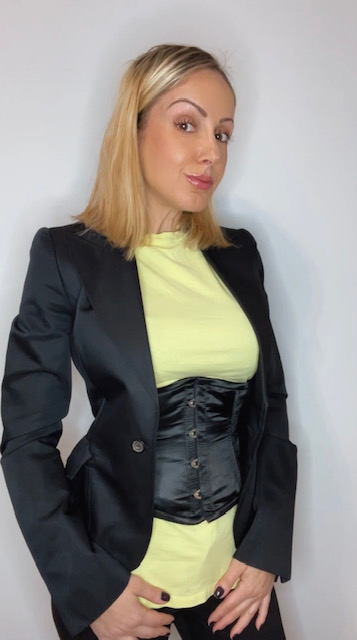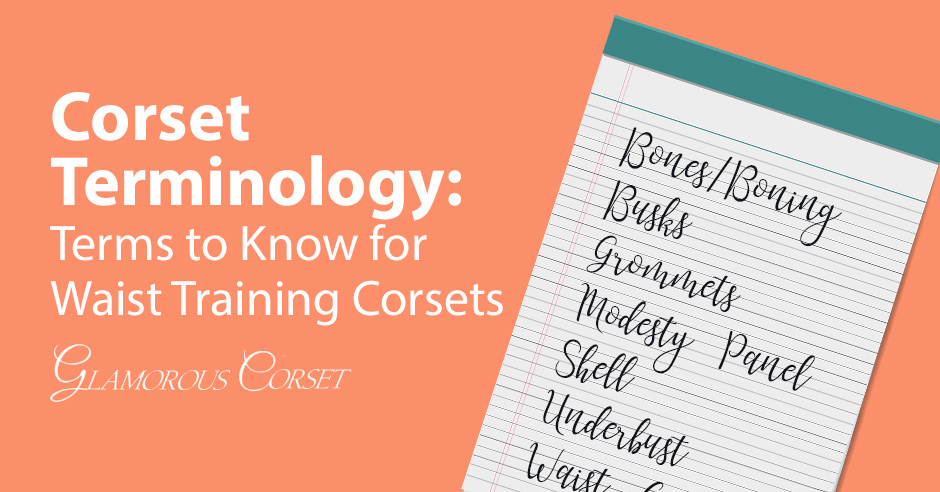Blog
Corset Terminology: Terms to Know for Waist Training Corsets
Anyone can strap on a corset and call it a day, but if you’re serious about waist training, it pays to have a basic understanding of the ins and outs of corsets. Think about the amount of time you spend reading labels at the supermarket to pick the perfect pasta sauce, even though they pretty much all contain the same basic ingredients.
You probably only eat spaghetti once a week, if that. You’re going to start out wearing your waist training corset a couple of hours a day and gradually work your way up to all day, every day. Should you know something about the product you’re using? Um, yes, probably a good idea!
To get you started, here are a few common gems of corset terminology you should become familiar with.
Bones/Boning
Bones are long, thin rods that provide the rigid structure of a corset. They are called bones because they were originally made from whale bones. These days, you can find versions made of steel, plastic, and other materials, but steel boning is preferred for waist training. Bones are held in place by channels sewn into the fabric of the corset.
Busks
In addition to lacing on the back of the corset, there are many different kinds of front closures to help you get in and out of your corset more quickly and easily. Busks are the best. They don’t exactly spring closed like a steel-jawed trap, but they are made of durable steel.
One strip has pins and the other features D-shaped loops that the pins slot into. These heavy-duty closures are easier to clasp than hook-and-eye, and definitely more durable.
Grommets
You’ll recognize grommets if you wear lace-up kicks – they’re the metal-ringed holes through which you thread the laces. They serve the same purpose on your corset, although likely less people get a gander at them (wink, wink!).
Modesty Panel
The modesty panel is a flap of material inset to cover the gap under the lacing of your corset for the purpose of – how can I put this delicately? – hiding any squishy bits. I don’t care if you have 8% body fat, when you cinch your corset, your skin will squish! Okay, maybe it’s just me? Nope, pretty sure it’s everyone.
Shell
This is the fabric sheath of your corset, which houses the boning and encases your body. If you want it to hold up to wear without tear, choose strong textiles, like leather, brocade, high-quality satin, or even durable, breathable mesh.
Underbust/Overbust
This is pretty self-explanatory, but just in case you’re not familiar, overbust corsets span your torso from the hips to the top of the bust, while underbust products extend only to the underside of your bust. For ladies like all the jiggly bits locked down, overbust is preferable. If you’d rather rely on your trusty bra, go for an underbust option.
Waist Cincher
Okay, ladies, this is corsetry 101. Waist cinchers fall into the category of corset, but they are NOT waist trainers. Cinchers are shapewear, designed to tame the waist, making your body appear smooth under clothing. They are flexible, lack boning, and provide very little support. Plus, no lacing. In other words, they’re not at all suited to waist training!
Want to learn more about the lingo & terminology of corseting? Contact us – we’d love to help! If you’d like to stay up-to-date with weekly blog posts, waist training tips, and the chance to win one of our monthly corset giveaways, like us on Facebook & subscribe to our mailing list today!

My name is Rachel, I am the owner of Glamorous Corset, a small business founded by me in 2010. Back In 2005, I was in a car accident that left me with a herniated disk. Much to my surprise I learned steel boned corsets were beneficial to several medical injuries including mine. I was always intrigued with corsetry, their history and their beautiful aesthetic. I love sharing knowledge about corsets, educating my wonderful readers and breaking the negative stigma related to corsetry. In combination with my years of research and personal experience I hope my articles are useful and can help anyone who has struggled with some of the same things I have. More about me…


